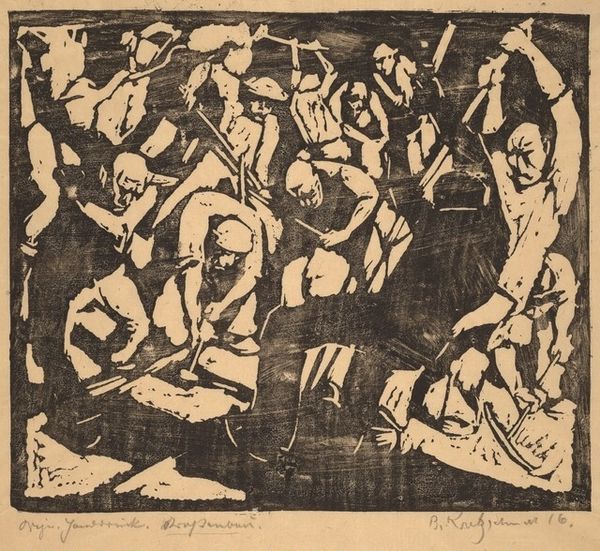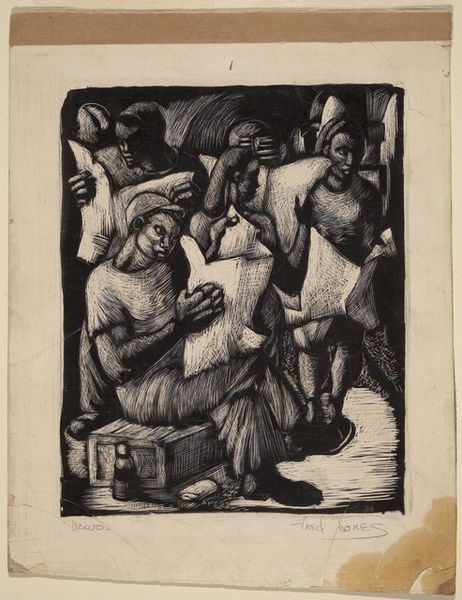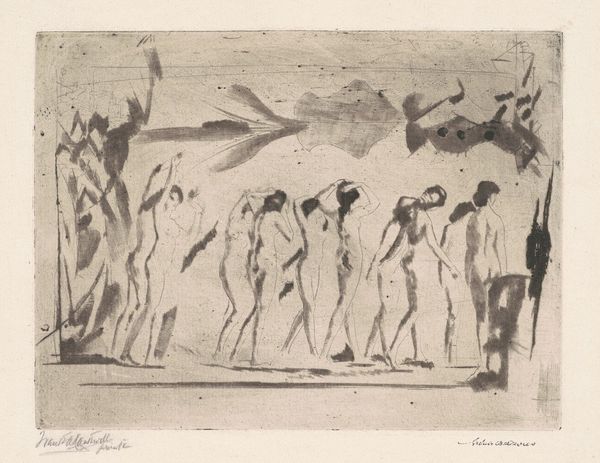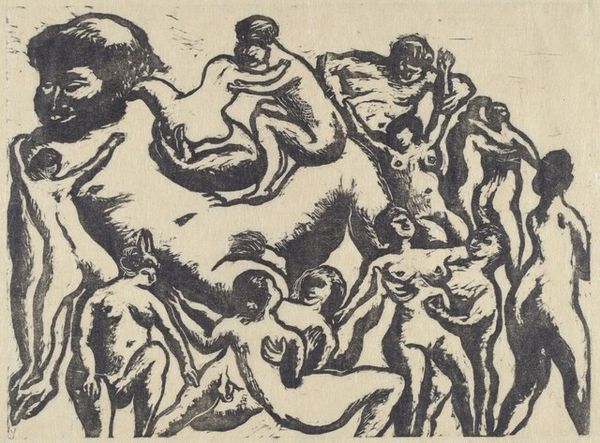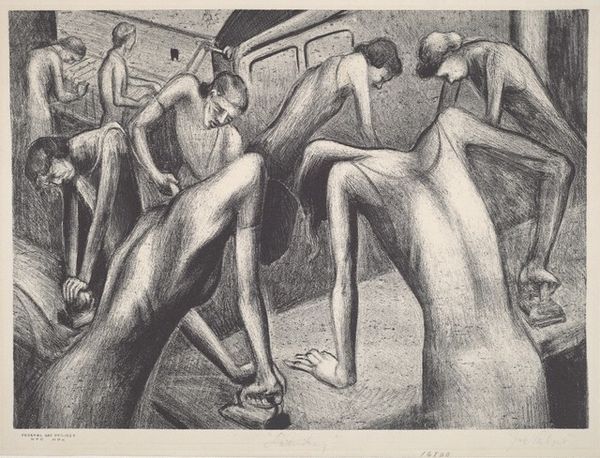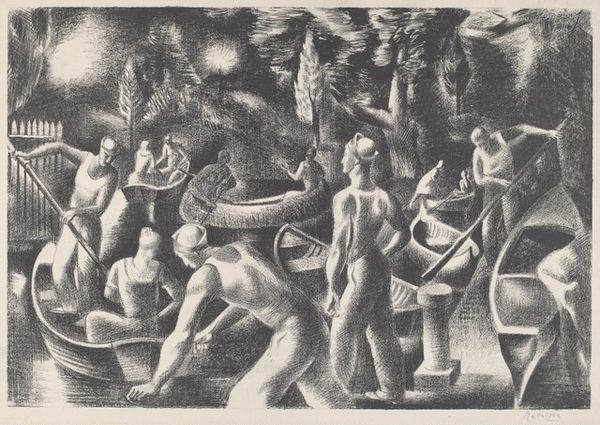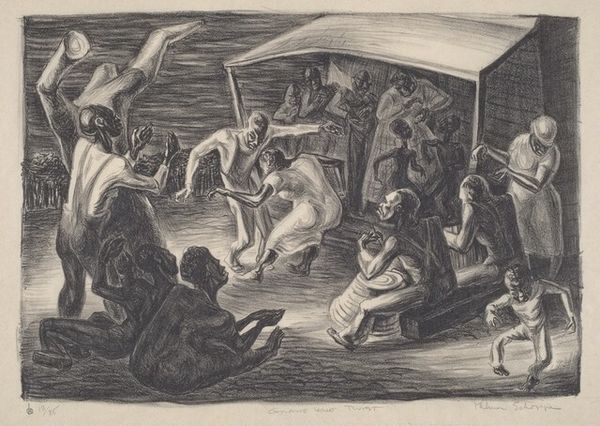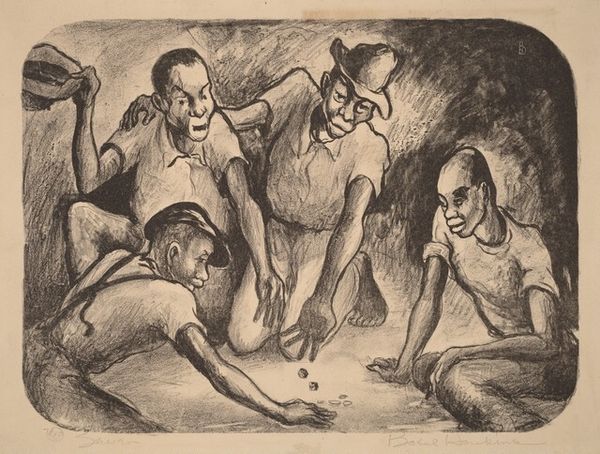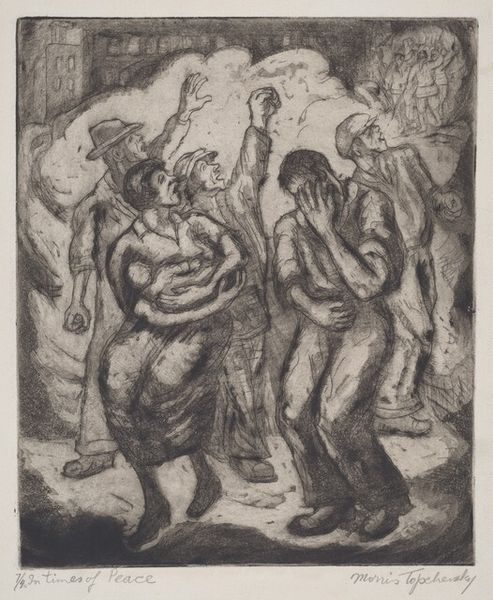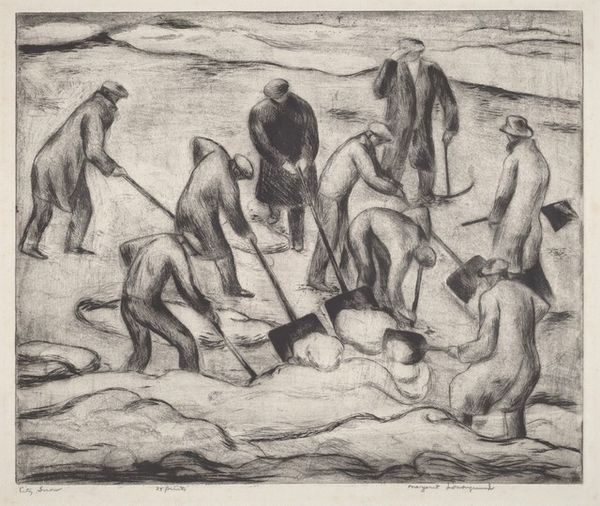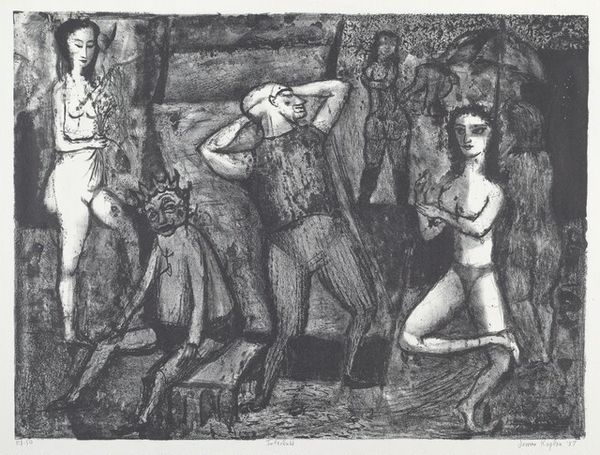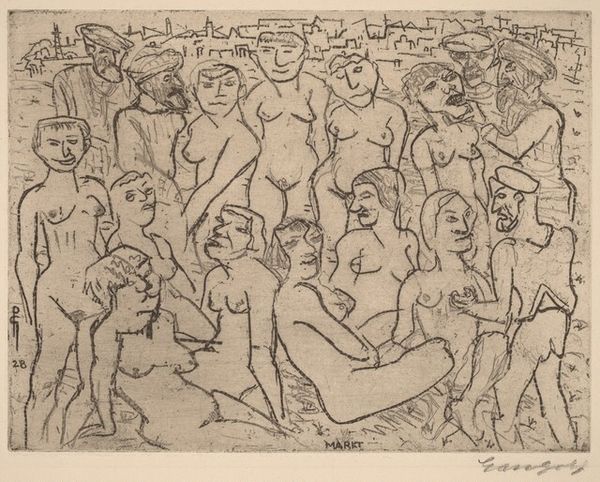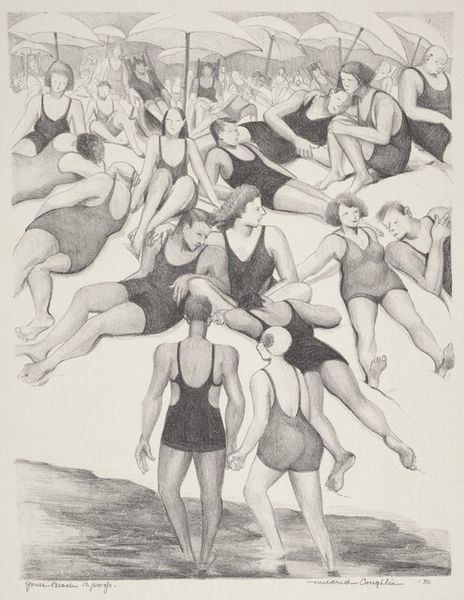
drawing, print, etching
#
drawing
#
narrative-art
# print
#
etching
#
figuration
#
pencil drawing
#
history-painting
#
realism
Dimensions: Image: 283 x 265 mm Sheet: 401 x 298 mm
Copyright: National Gallery of Art: CC0 1.0
Curator: Fred Nagler's etching, "The Drought," created around 1936, presents a powerful depiction of human suffering. What are your initial thoughts? Editor: My first impression is one of collective anguish. The stark, monochrome palette heightens the emotional weight, doesn't it? There's a feeling of desperation communicated through the upward thrust of the figures’ arms, yet the tight composition nearly suffocates them. Curator: It's interesting you say that. Looking at this print through a historical lens, Nagler likely aimed to capture the dire realities of the Dust Bowl era in the United States. We have emaciated figures, their faces etched with despair, set against a landscape implicitly ravaged by environmental catastrophe. The raising of arms could equally be supplication or a challenge, couldn’t it? Editor: Absolutely. It reflects a pivotal historical juncture. Consider how race intersects here: who suffered most during these calamities and why? Are these arms raised in collective demand of the social policies that continue to enable class-based disasters today? There's also a distinct absence of any single dominating figure; it underscores collective action, as well. Curator: And I think the lack of individual prominence certainly feeds into a broader narrative of systemic failure. It is not the fault of the individual, rather it exposes governmental policies or social infrastructures unable to respond adequately to widespread need. Notice how the realism amplifies the palpable nature of historical pain. Editor: Definitely. The bodies are rendered almost raw, devoid of romanticism, driving home the raw intersection of human bodies, class-based exploitation, and ecological destruction. Curator: Indeed. Nagler successfully translated societal failures into potent imagery, making "The Drought" not merely a historical document but a stark reminder of enduring vulnerabilities. Editor: An evocative artwork that forces us to contemplate how histories of environmental injustices are repeating themselves today.
Comments
No comments
Be the first to comment and join the conversation on the ultimate creative platform.
